Beyond Art: Collecting Craft, Design and the Vernacular
VIEW EVENT DETAILSThursday, 27th July, 6:30 p.m. - 8 p.m.
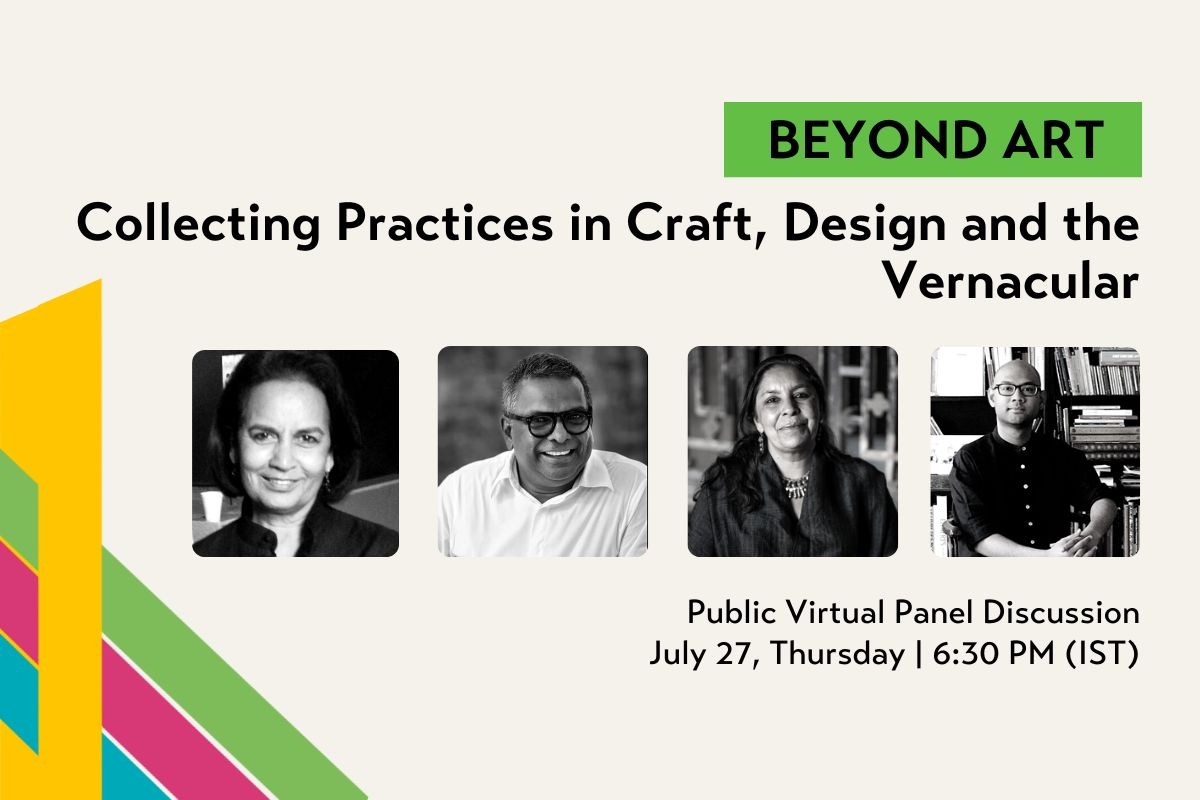
Collecting is an art. From choosing the specific works that add to an existing collection to active maintenance and care of objects, there’s a lot that goes on behind-the-scenes. Art collections around the world don’t just give us an insight into the preferences of an individual, but also have philosophical, psychological and political connotations attached to the works acquisitioned. With radical modes of art and new-media, there are radical modes of collecting that allow us to look at art collections critically and engage with them in building new narratives of art history.
Closer home, art collecting, often driven by curiosity, keen admiration for a certain style of work, and a desire to forge new relationships, can be seen to be a beacon of hope for the region’s emerging art market. After our engagement with craft practitioners, researchers and facilitators of craft, for the third programme in Asia Society India Centre’s In Practice: New Vocabularies for Craft series, we now turn to collectors of craft and the vernacular arts in India and other regions in South Asia.
The aim of the conversation is to understand what craft signifies to the collectors when it comes to their practice. We hope to address questions about whether there is a distinction between craft and vernacular arts when it comes to collecting, and what elements or aspects of an object constitutes them to fall under such a terminology. Furthermore, we hope to establish the emerging need for private collectors to invest in collecting and preserving vernacular art and what the future of such private collections is – for academic and research purposes as well as building an awareness about the history of our cultures.
We see this conversation take the shape of a deep-dive session – one that involves the collectors giving us a peek into their collecting practice and how it has evolved over the years. Through this, we hope to develop a better understanding about the contours of the varied collecting practices in the South Asian region. Some of the preliminary questions we wish to address include: Is there is a difference between the practice of collecting art and craft objects? Given that the meaning of craft can vary region to region, what do they define as craft in their collection? Where and how do they purchase crafts - is it from auction houses or the practitioners directly; and how does this impact the object valuation? What are some of the conservation and preservation practices they seem to encounter? With the establishment of cross-border collaborations and new ways of engagement, what are the some of the creative ways in which collections have been or can be brought out for public viewing? What is the vision of building such a collection? Would these collections aid in learning and innovating practices?
Join our panelists Lekha Poddar, founder of Devi Art Foundation; Udayshanth Fernando, founder of Paradise Road, Sri Lanka; and Monisha Ahmed, independent researcher and co-founder of Ladakh Arts and Media Organization; as they take us through their journeys as collectors of craft and vernacular arts. The session will aim to spotlight the different collection practices along with the various avenues used to archive and build patronage of indigenous craft and vernacular arts in the subcontinent. This discussion will be moderated by Mayank Mansingh Kaul, independent curator and a member of our Arts Advisory Council at Asia Society India Centre.
******
This panel discussion is the third programme of In Practice: New Vocabularies for Craft, a long-term series that brings together art-makers, entrepreneurs, collectors, designers, and other stakeholders from the crafts and vernacular arts sector, in India and South Asia. The aim of the series is to act as a platform where we can collectively question and build awareness about the myriad contexts of craft and vernacular artistic traditions within a contemporary context.
SPEAKERS
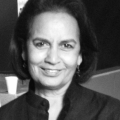
Born in 1950 in Calcutta, Chandra Lekha Poddar is a philanthropist, business woman, and an art collector. In 1990 she established Jeevashram, which cares for injured and sick animals. In 1997 Textile Arts of India, was formed as a society to promote the excellence of traditional handloom crafts of the country.
In 1990, along with friends, she restored and started Neemrana Fort Palace Hotel, near Alwar, in Rajasthan. In 2000, along with her son, Anupam Poddar, an 18th century Fort Palace outside Udaipur, Rajasthan, was restored and opend as an hotel called Devigarh, with 30 suites. In autum of 2011, Jaipur, Rajasthan, saw the opening of 2 new hotels Devi Ratn, a property with new age design which has been influenced by the Jantar Mantar (18th C Observatory) and Rasa, and eco friendly property with modern Cube like tents.
Together with her son Anupam, Chandra Lekha harnessed her passion for Contemporary Indian Art - by the formation of the Devi Art Foundation, which was established in 2008. Till now at least 20 major exhibitions have been held in Gurgaon, Haryana and New Delhi.
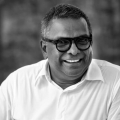
Udayshanth Fernando is Founder and Chairman of Paradise Road Group of Companies, Founding Director of the Udayshanth Fernando Foundation and recipient of the ‘Kala Suri’ – a national honour conferred for special contributions to the development of the Arts in Sri Lanka. Udayshanth Jayantha Fernando was born in Colombo, Sri Lanka and lived both in Europe and Australia as a young adult. In 1987, Fernando opened the first Paradise Road store, which has grown into a renowned, internationally recognized lifestyle brand, with a portfolio extending to hospitality, design, retail and art.
In 1998 he founded Paradise Road Galleries within Paradise Road The Gallery Café. As an Art Collector and Patron, Fernando's focus within the walls of The Gallery Café has been to curate exhibitions that highlight the diversity of contemporary Sri Lankan and South Asian Art. As a Collector, Udayshanth Fernando curates the company’s private collection throughout all its locations; combined with his own collection these works make up the largest privately-owned collection of Sri Lankan modern and contemporary art.
In 2021 the Udayshanth Fernando Foundation was established with the intention of formalizing Fernando's support of the local art industry via a production fund now it’s second edition.
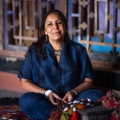
Monisha Ahmed is an independent researcher, writer and curator whose work focuses on art practices and material culture in Ladakh.
Her doctoral degree from Oxford University developed into the book Living fabric – Weaving among the Nomads of Ladakh Himalaya (Orchid Press, 2002), and received the Textile Society of America’s R L Shep award in 2003 for best book in the field of ethnic textile studies. She has co-edited Ladakh – Culture at the Crossroads (Marg 2005), collaborated on Pashmina – The Kashmir Shawl and Beyond (Marg 2009), and published several articles on textile arts of Ladakh, as well as other parts of India, including four in The Encyclopedia of World Dress and Fashion (Berg Publishers, 2010), a chapter for The Arts and Interiors of Rashtrapati Bhavan – Lutyens and Beyond (Rashtrapati Bhavan, 2016), and the catalogue Woven Treasures – Textiles from the Jasleen Dhamija Collection (Saffronart, 2016).
More recently she was advisor for the Bhau Daji Lad Museum’s online exhibit We wear Culture for the Google Cultural Institute. She has curated exhibitions ‘Mapping Old Town, Leh’ (2013), ‘thread by thread’ (2015), ‘Between Land and Sky – Woven Gold from the Gyaser Tradition’ (2019) and ‘Classic Miniature Costumes: 1850 to 1950’ (2019).
From 2010 to 2016 she was Associate Editor of Marg Publications. She is co-founder and Executive Director of the Ladakh Arts and Media Organisation (LAMO).
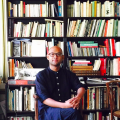
Mayank Mansingh Kaul is a New Delhi-based independent curator with a focus on post colonial histories of Indian textiles. He is a graduate in textile design from the National Institute of Design, Ahmedabad.
Exhibitions that he has curated include Fracture — Indian Textiles, New Conversations (Devi Art Foundation, Gurugram, 2015); New Traditions — Influences and Inspirations in Indian Textiles, 1947 — 2017 (Jawahar Kala Kendra, Jaipur, 2018); Meanings, Metaphors — Handspun & Handwoven in the 21st Century (The Registry of Sarees, Chirala- Coimbatore-Bengaluru, 2018-19); Red Lilies, Water Birds — The Saree in Nine Stories (The Registry of Sarees, Hampi, 2022) as well as Fine Counts — Indian Cotton Textiles and Vayan — The Art of Indian Brocades (National Crafts Museum & Hastkala Academy and Devi Art Foundation, New Delhi, 2022-2023). He is the editor of Baluchari - Tradition & Beyond (Weavers Studio Resource Centre, 2016), Cloth and India — Towards Recent Histories, 1947 to 2015 (Marg, 2016), Take on Art Design (2012) and Take on Art Fashion (2019).
He is a Contributing Editor for Architectural Digest India and Member of the (South Asia) Arts Advisory Council at Asia Society India Centre.
